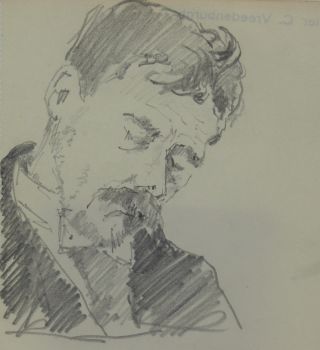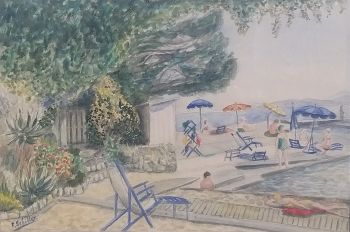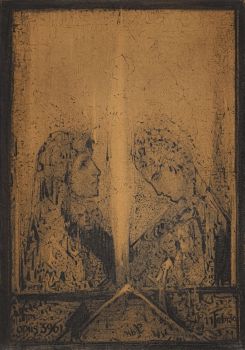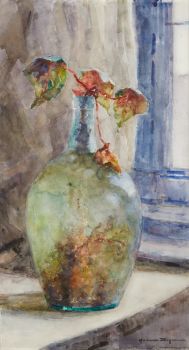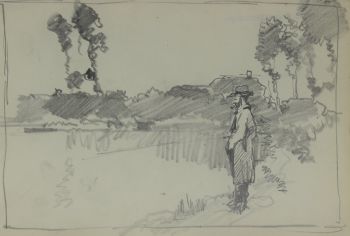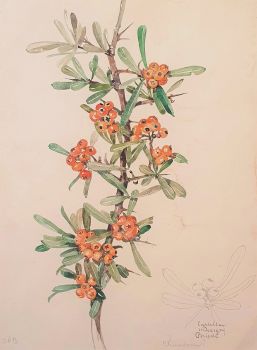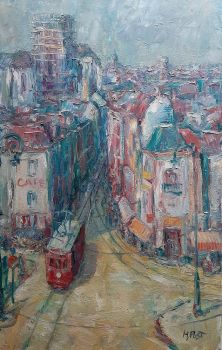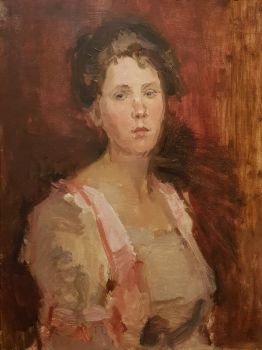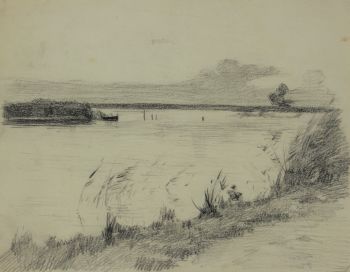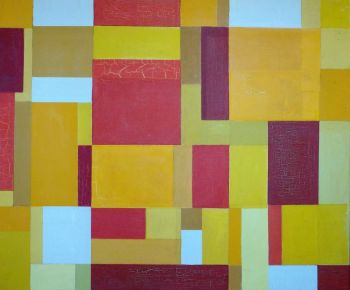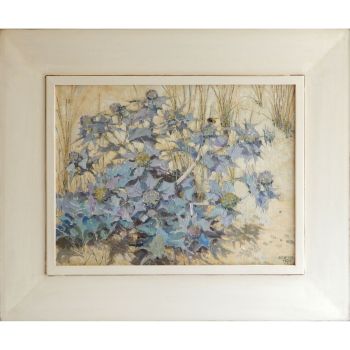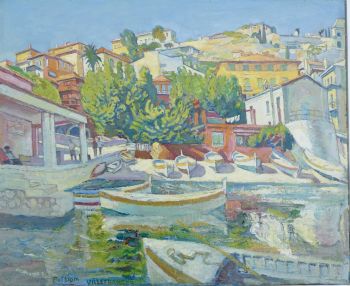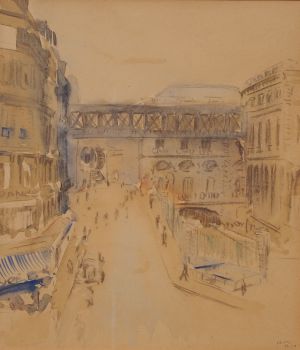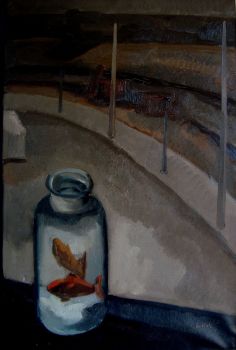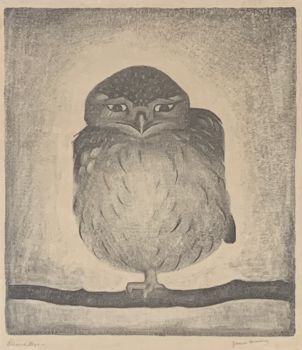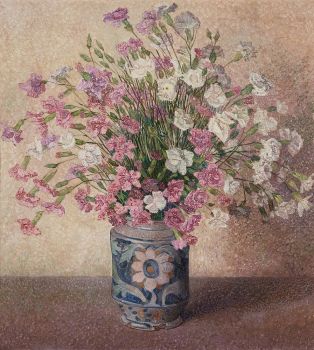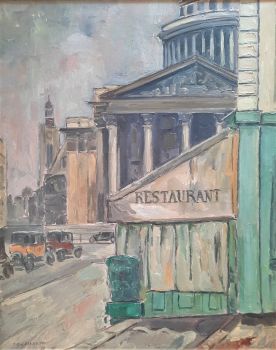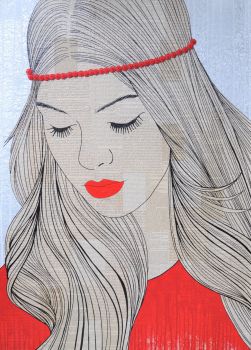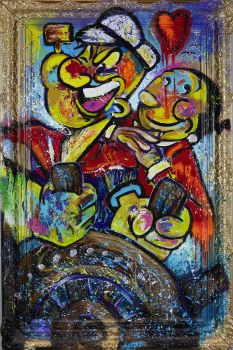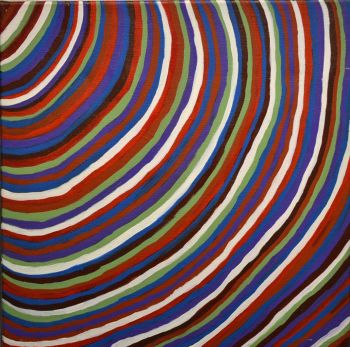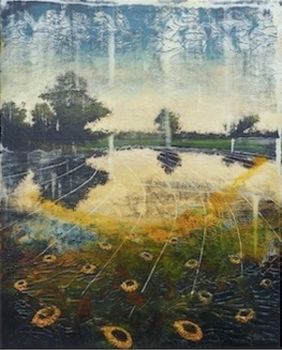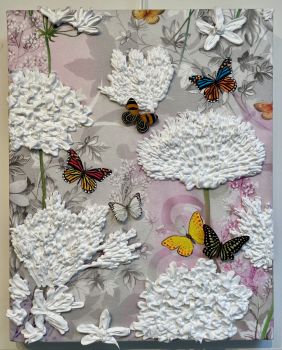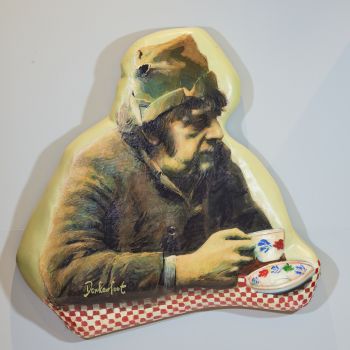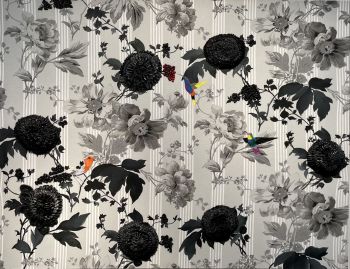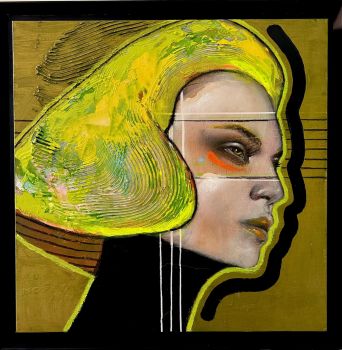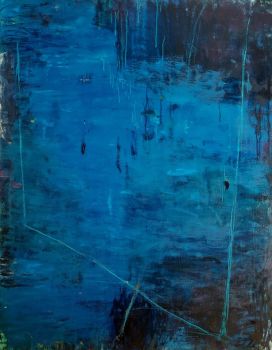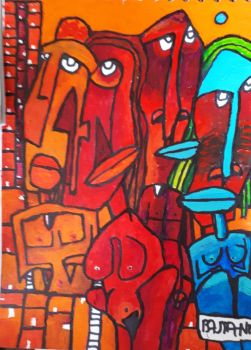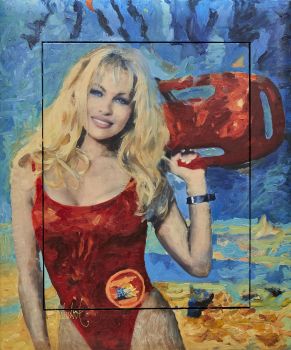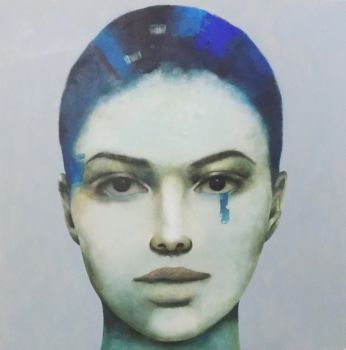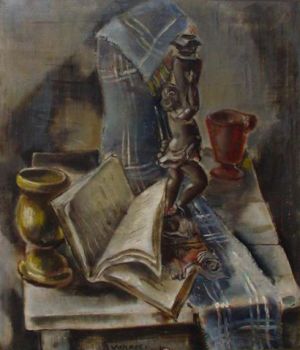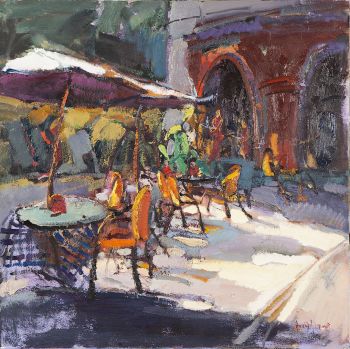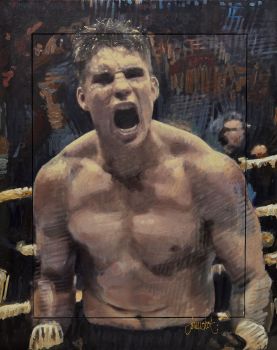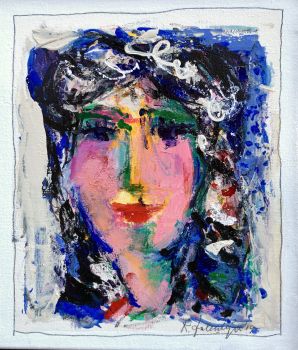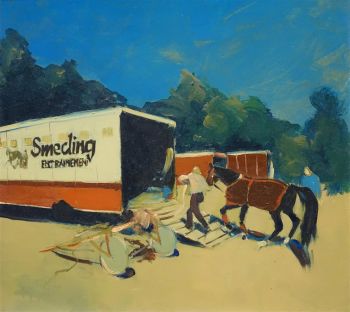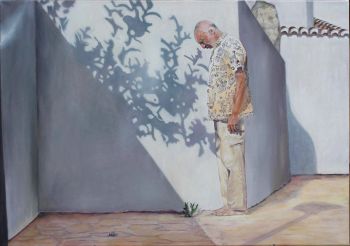About the artist
Chapon was a son of Barend Chapon (1884-1943) and Mietje Zilverberg (1881-1943). His father was a stockbroker, chairman of the church board of the Jewish community and member of the Jewish Council in Haarlem, he was shot after the attack on Alois Bamberger. Chapon was initially also going to work in the financial world, but chose a career as an artist during the war. Before that he took lessons from Henri Boot and Kees Verwey.
From 1947 Chapon exhibited his work in the Netherlands and France. He painted landscapes, figures, portraits and still lifes. As a monumental artist, he made stained glass windows and walls, using ship plates. Holes were burned in the steel plates, which he filled with glass appliqués. For this he collaborated with the Van Tetterode workshop. Chapon created relief on the walls by forging pieces on them. The creation of his wall for De Nederlandsche Bank was made into a film, the film earned a gold medal at the festival in Bilbao in 1972. From the 1970s, Chapon also worked with polyether and plexiglass.
Chapon was married to Apolonia Johanna (Polly) Meure in 1940. She started Galerie Espace in November 1956 with Eva Bendien in her husband's studio at 36 Klein Heiligland in Haarlem. In 1960 the gallery moved to Amsterdam. Meure started a new gallery in Brussels in 1964 and settled in Belgium, the official divorce followed a few years later. Chapon exhibited at Espace in 1968. He spent time in France regularly since 1947 and settled there permanently in 1973. In 1996 a retrospective exhibition of his work was held in the Jewish Historical Museum.
In 1996, Jules Chapon told his life story at the USC Shoah Foundation Institute, founded in 1994 by Steven Spielberg. This story is included in the Collection 2000 Witnesses Telling of the Jewish Historical Museum.
Chapon passed away in 2007, at the age of 92.

